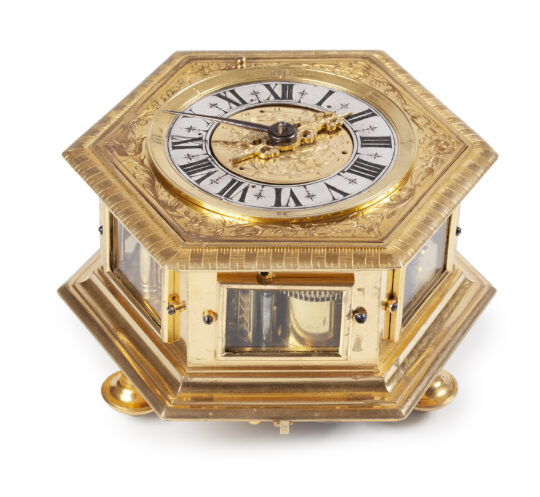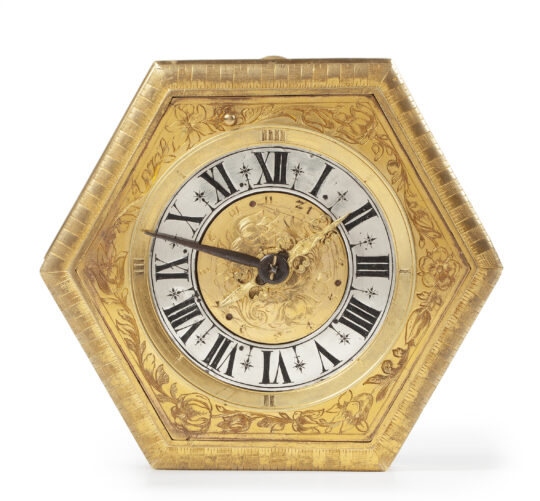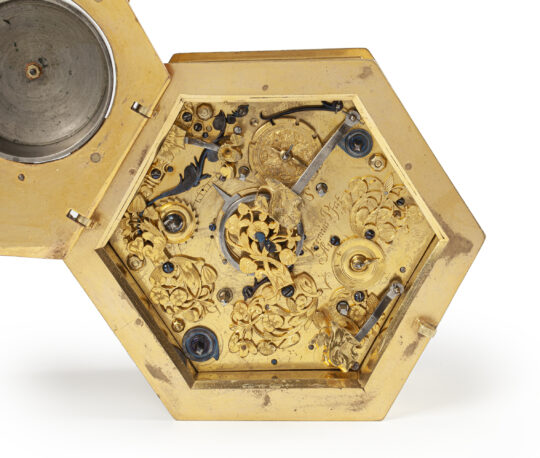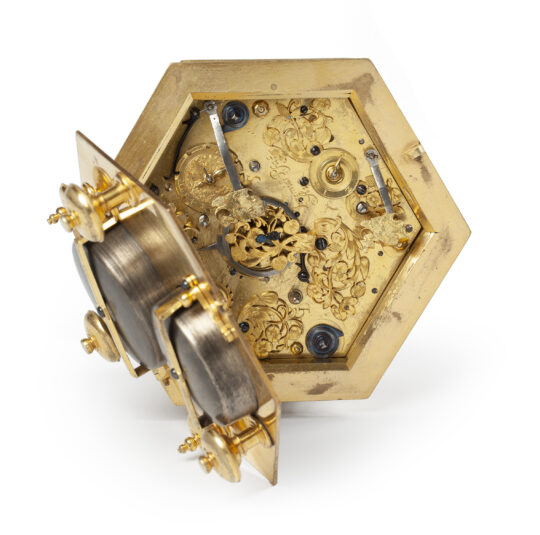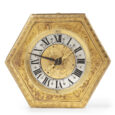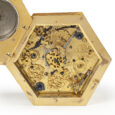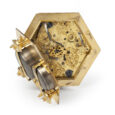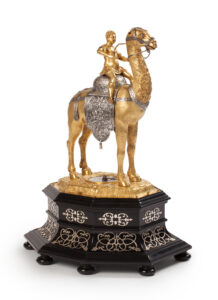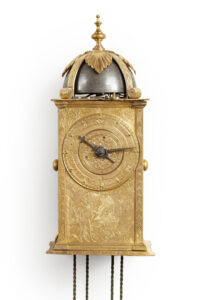HEXAGONAL TABLE CLOCK Jeremias Pfaf, Aug. Ca. 1680 Augsburg, Germany
M&R203a
HEXAGONAL TABLE CLOCK
Signed: Jeremias Pfaf, Aug.
Circa 1680
Augsburg, Germany
Movement
The spring-driven brass movement consists of going and quarter striking trains, as well as alarm. The going train has a chain fusee, verge escapement with balance and regulation, under a richly pierced and engraved balance cock. The striking indicates the hours fully on a bell and the quarter striking the quarter hours on a second bell. The striking can be repeated, first sounding the quarters, followed by the hours on two bells differing in pitch. The count wheel of the hour striking is engraved and has a blued steel hand indicating the last hour struck, just like the quarter-hour striking count wheel. The backplate is signed as follows: Jeremias Pfaf, Aug.
Dial
The circular dial has a silvered Roman chapter ring with half-hour divisions. The time is indicated by a pair of sawn-out hands, one firegilt, pierced and engraved, the other blued steel. There is a firegilt brass alarm disc in the engine-turned centre. It has engraved Arabic numerals and a beautifully engraved centre.
Case
The hexagonal firegilt case has six windows to the sides. The bells are situated in the hinged bottom lid, which can be opened with a catch. There are engravings around the silvered chapter ring. The clock rests on three turned gilt brass feet, whilst there are also two drop finials between the feet.
Duration 1 day
Height 9.5 cm.
Diameter 15.5 cm.
Literature
J. Abeler, Meister der Uhrmacherkunst, Wuppertal, 2010, p. 426.
The maker
Jeremias Pfaff was the son van Jeremias I Pfaff. He was born in 1651 and from 1677 independently active as a clockmaker in Augsburg. There are several clocks known by his hand.

